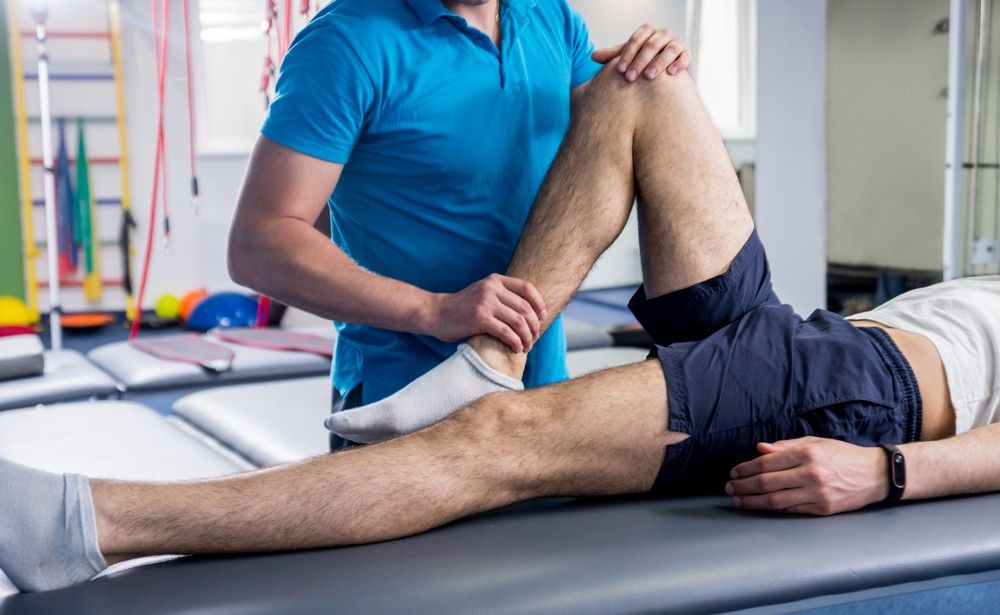What to Expect When Working with an Athletic Trainer After Your Diagnosis
Spring is here, which means baseball, softball, tennis, and track and field season are officially kicking off. Some football teams are getting head start with pre-season training, too. As is the case with any sport, with competitive play comes common injuries that may potentially sideline you or your athlete.
Most athletes are so focused on the game itself that the concept of injury isn’t on their mind until it’s already upon them. However, it’s important to note the difference between “playing through the pain” and incurring an injury that warrants the attention of an athletic doctor. To provide some clarity, we’ll break down the most common spring sports injuries and how they can be addressed. Most athletic injuries can be avoided through proactive measures, such as athletic training services.
Once we’ve covered that, we will break down the benefits of working with an athletic trainer, as well as how to schedule an appointment with one at Mid-America Orthopedics.
Injury #1 – Sprains
According to the National Library of Medicine, approximately 40% of ankle injuries occur during athletic activity, such as soccer, football, and basketball. However, ankle sprains are common in baseball and track and field as well.
An ankle sprain occurs when the ankle is rolled or twisted in an awkward way, which can lead to a tear or unnatural stretch in the ligaments. Because the ligaments are responsible for holding the ankle bones together and stabilizing the joint, a sprain can sideline an athlete for several weeks.
Unfortunately, there’s no fast track to recovering from a sprained ankle. The best course of action is to follow these four steps:
- Get plenty of rest, and avoid putting weight on the injured ankle.
- Regularly ice the ankle in 20-minute intervals every few hours.
- Use a compression device to help reduce the swelling.
- Keep the ankle elevated as much as possible.
Injury #2 – Repetitive Strain Injury (aka Overuse Injury)
In sports, repetitive strain injuries (RSIs) are caused by making the same motion or specific movement over and over, which can eventually cause damage to the joint, tendon, or bone in the appendage in question. This type of injury is most commonly associated with baseball pitchers and tennis players. For example, the term “tennis elbow” is the moniker used to describe the repetitive strain injury from swinging a racket.
The most common symptoms of an RSI include weakness in the joint, stiffness, redness, swelling, and pain, especially when performing the motion that’s causing the injury. Similar to sprains, the best course of action for RSIs is rest and behavioral modification. Athletes should:
- Rest the appendage in question, and avoid making the specific motion that aggravates the injury.
- Use cold packs on the joint to reduce irritation and swelling.
- Take over the counter medication, such as ibuprofen, to deal with the pain, as approved by your physician.
- If needed, engage in physical therapy to help develop strength and flexibility.
- Confirm that you are using the correct technique with an athletic trainer and adjust as necessary.
Injury #3 – Muscle Tears and Strains
During competitive play, muscles will naturally stretch and strain; however, muscle tissue is only designed to stretch so far. When a muscle becomes overstretched, it can cause a tear or strain in the muscle tissue.
A torn muscle or strain can lead to extreme pain or tenderness, redness or bruising in the affected area, reduced motion, muscle spasms and weakness, and swelling. For treatment, the best course of action consists of the four following steps:
- Rest the area or appendage that is torn or strained.
- Apply ice to the area to help with swelling and pain.
- Use compression (if possible) using an elastic bandage for reduced swelling.
- If applicable, elevate the area to help reduce swelling.
The Benefits of Working with an Athletic Trainer
Sprains, RSIs, and muscle strains all have one thing in common: they can be prevented with the right athletic training. Considering how much duress the body endures during athletic competition, the best way to prevent the most common injuries is through comprehensive preparation, which is exactly where athletic training services come into play.
The athletic trainers at Mid-America Orthopedics specialize in:
- Preventing sports injuries.
- Caring for sports injuries.
- Pain management for sports injuries.
- Rehabilitating sports injuries.
Since the athletic training staff works at the Mid-America Orthopedics clinic, that allows them to work closely with athletes when delivering a full continuum of care. This is also convenient if your athlete needs to be referred over to an athletic doctor for serious injuries.
Looking to Learn More About Our Athletic Trainers? Contact Us!
If you are currently enrolled in a sport or planning to enroll, athletic training services can help properly prepare your body to be more resilient to common sports injuries. Mid-America Orthopedics works with athletes of all ages and ability levels, and our athletic trainers collaborate closely with coaching staff to create an emergency response team for serious on-the-field injuries.
Call us at (316) 630-9300 to inquire about the athletic training services offered through Mid-America Orthopedics. You can also email us directly using the contact form on our website.

